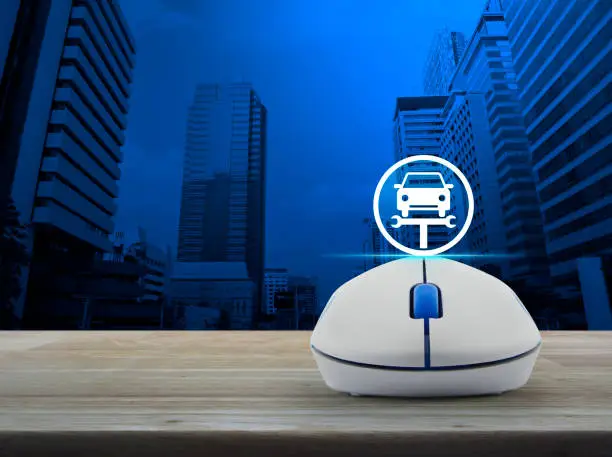Last week, I took part in a radio show on AI electric cars of the future. It was based on an article from the BBC’s TopGear, which used to be my favorite car program, but they changed hosts, so I rarely watch it now.
It got me thinking about how fast things are moving and how much misinformation is out there regarding how and when autonomous driving will be viable (it isn’t yet, regardless of what Elon Musk says), the state of electric vehicles today, the very low probability for hydrogen to replace batteries, and where else AI will be introduced into our cars.
What is particularly interesting and concerning is how fast China is moving with these technologies and how much better, faster, and cheaper its electric cars are, even though it currently has a serious quality control problem.
Let’s talk about the rapid advancements in autonomous driving, the current state of EVs, and the role of AI in the automotive industry. Then, we’ll close with my Product of the Week: an automotive cheat tool my wife bought me that I am impressed with.
Electric Car Status
The pressure on electric car sales has been increasing rapidly of late, mainly because demand for these cars has declined, slowing market growth. This slowing is due to three things: continued quality problems, particularly with Tesla’s new Cybertruck, some of Musk’s political views, and a lack of marketing execution.
As a result, Tesla has taken a hard hit in terms of sales momentum. Given it’s the biggest player, for now, in the electric car market, its problems are having a huge impact on the industry.
But Tesla isn’t alone. Virtually all of the traditional carmakers have had issues pivoting to electrics. Even though electric cars should be automotive appliances that rarely break, they have been breaking a lot — so much so that their repair rate adjusted for volume is far higher than that of internal combustion engine (ICE) cars, resulting in recent surveys indicating that more than half of the current electric car owners want to go back to ICE vehicles.
By the way, if you haven’t tried both types of chargers, the old U.S. standard required a fee and an ATM-like experience: you first had to enable the charger with an app, and then it might allow your car to charge — although often the chargers were broken. Tesla drivers, on the other hand, could just plug in.
However, Tesla chargers have issues with gas-powered cars parking in the charging spaces, Tesla drivers leaving their vehicles longer than necessary, people breaking the chargers, and theft (which isn’t only a Tesla charger problem).
As I see it, the problem is that we began this shift to EVs before we had the needed technology. Lithium-ion batteries were developed after decades of slow progress in battery technology for electric devices like cell phones, iPods, and laptops. Plus, you might recall many of those batteries catching fire, a problem that continues to plague us.
Lithium and cobalt, both used in current lithium-ion batteries, are challenging to mine. Lithium burns hot enough to melt aluminum and some types of steel, as I discovered when a battery nearly burned my house down after melting the steel screws on its containment chamber. Additionally, lithium batteries break down rapidly when overheated, such as during fast charging.
Big Changes Coming
Over the last 30 years, we have ramped up battery development massively. By 2027, we should have viable alternatives to lithium-ion, including solid-state batteries, sodium-ion batteries, and some new lithium versions (cobalt mining is also pretty nasty).
These coming technologies promise ranges of 750 miles or more, 15-year, 1M-mile service life, and other advantages that would make the need for charging away from your home infinitely less pronounced because how often do you drive over 750 miles?
These new batteries, coupled with ever more powerful chargers, should result in sub-10-minute charging times without the current danger of prematurely aging your batteries. China’s XPeng already has a car with a near 500-mile range at a really attractive price, suggesting it is becoming as significant a threat to existing carmakers as Japan once was. Until now, Tesla has had a considerable range and price advantage in this market.
So electric propulsion will become more convenient and competitive with gas cars, but what about AI?
Wrapping Up
I expect most of the current drama about electric vehicles will be fully resolved by 2030, and on higher-end cars well before that.
In addition, the coming wave of AI technology will allow us to create a deeper relationship with our vehicles. Since generative AI is conversational, imagine having discussions with a car on a long drive while the car keeps you far safer than you can keep yourself. AI doesn’t get distracted, have substance abuse problems or sudden medical conditions, and when vehicles can talk to each other, they can avoid human-driven cars that are having issues and potentially reduce accidents by over 90%.
The question becomes: once the car is smart and can drive itself, will you need to own one, or would you instead subscribe to a car service, like Uber, without the driver and save the money you’d spend on your car for other things? The younger generations already avoid driving successfully, so while those of us of a certain age may be tied to ownership, they are not.
I love driving, but I’m also willing to use this new technology so I can enjoy events without worrying I may have had too much to drink (I don’t drink when I’m driving) and enjoy the company as much as those riding with me seem to.
Regardless, the future of electric cars with internal digital assistants is coming, ready or not.
Prince Parfait

